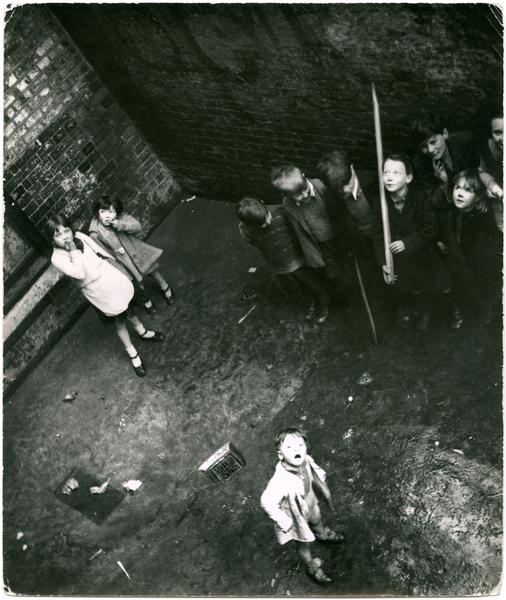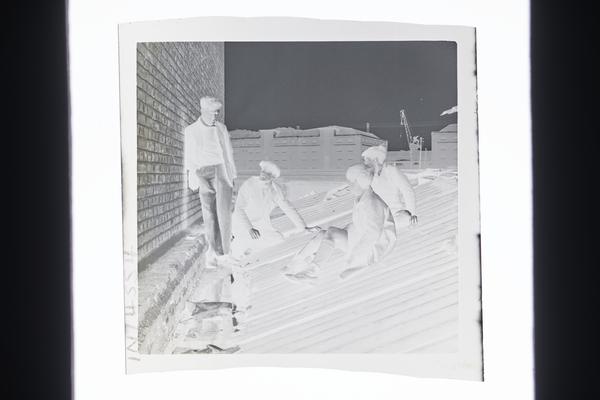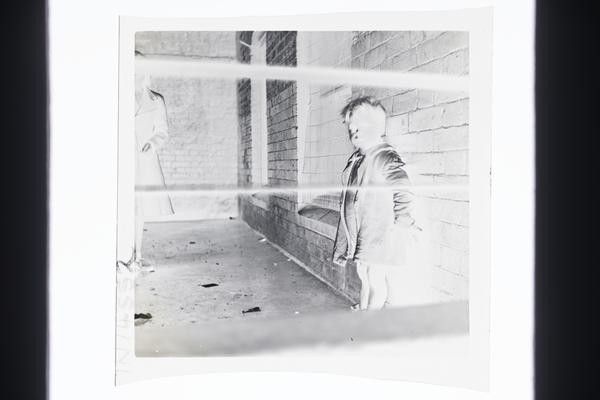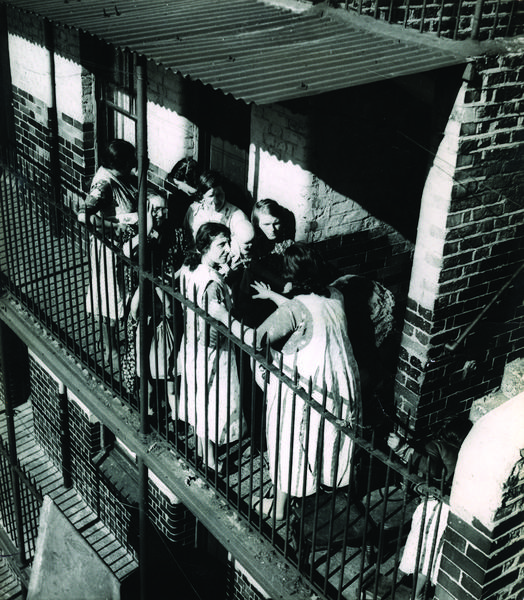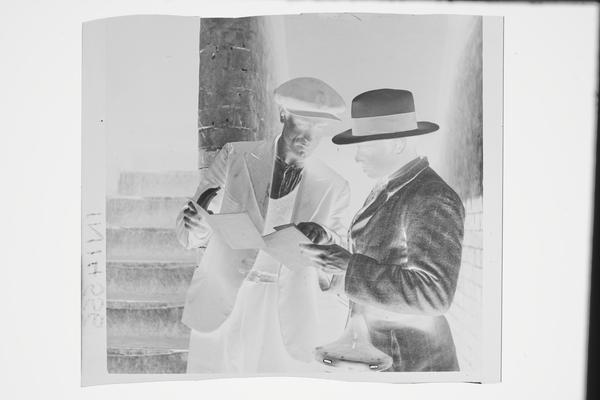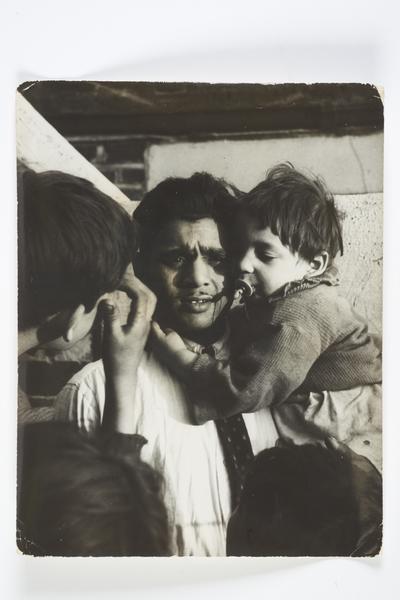Photographing an east London rent strike, 1939
By the 1930s, the Hanbury Buildings in Poplar was one of the worst slum tenement blocks in east London. Residents lived in appalling, overcrowded conditions – and their landlord wouldn’t carry out even basic repairs. So the Hanbury families refused to pay rent. Photographer Cyril Arapoff captured their plight in a story for Picture Post magazine.
Poplar, Tower Hamlets
1939

Arapoff’s documentary photography
A new wave of socially engaged photography emerged in the 1930s. Russian-born Arapoff was one of the leaders of this style in England. Using a fast miniature Rolleiflex camera, a popular camera at the time, he captured London through subjects like the industrial River Thames and the East End.

Work as a freelance photographer
Arapoff’s work was often exhibited and published in popular illustrated magazines. His story on the Hanbury Buildings was commissioned by Picture Post, then the leading magazine for photojournalism. The images were never published. But they’ve left us with an important record both of housing conditions in the East End, and of collective movements for tenants’ rights.

A site with a squalid history
The Hanbury Buildings were built in around 1887. It was a five-storey block with seven two-roomed flats per floor. The building replaced the six houses on Hanbury Place, in which residents also lived in poor conditions. One 1886 news article reported how families had lived with “choked drains, flooded with sewage, and no water” for 26 days.

Sylvia Pankhurst reported on the Hanbury Building
Hanbury Building residents had lived in poor conditions for many years. In 1919, the Suffragette Sylvia Pankhurst even wrote about their struggle in an article about Poplar housing in the Workers’ Dreadnought, the newspaper she founded and edited.

Terrible sanitation
Pankhurst noted how “there is no water in the apartments; it has to be carried from the washhouse”. Not much had changed 20 years later. The block still had very basic water and sewage facilities. There were three toilets and one tap per floor located in a common area. The washroom, seen in this photo, had cold water only.

Sylvia Pankhurst, Workers' Dreadnought, 1919
“The light in most of the rooms is dim... The rain beating on the stairway… the dripping from the tap in the wash-house used by so many people, [makes] the stone floor of the dark passage wet and muddy. Smoke pours from the wash-house. The socket holding the basin in which the clothes are boiled is broken away and through the holes the fierce flames rise up.”

Local authorities got involved
In 1936, a London County Council medical officer of health reported the block’s “superficial dilapidation” was “very evident at first sight”. He noted that the building was overcrowded and that its sanitary facilities were a possible danger to health. In 1937, some bug-ridden rooms were considered unfit to live in and closed.

Residents decided to take action
In 1939, residents joined the Poplar Tenants' Defence League to organise a rent strike. They demanded that the landlord should reduce the weekly rents, remove the widespread damp, fix the overflowing drains, provide taps and sinks in each flat, and replace the collapsed fireplaces. Here, two neighbours compare rent books, which recorded how much rent they paid.

The landlord took the tenants to court
In November 1939, the landlord of the Hanbury Buildings took legal action against the tenants and brought them to Bow County Court. He wanted to evict them for refusing to pay their rent. During the trial, one architect giving evidence said he’d never seen flats in a worse condition.

The tenants won the case
The judge ruled that the Hanbury residents were within their rights to withhold their rent. He also found that the landlord had been overcharging them for rent and that repairs hadn’t been carried out. But before anything could be done, the block was hit by a German bomb during the Blitz. The buildings were demolished between 1950 and 1955.


